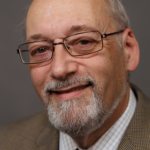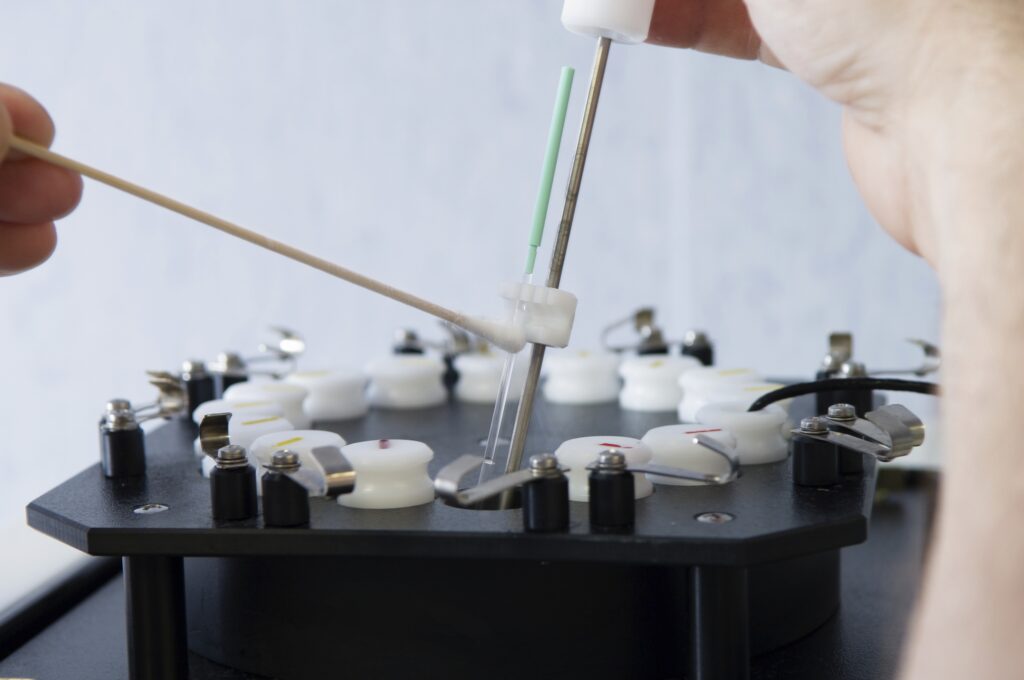Federal Bioethics Commissions and Bias Against the Unborn
This is Issue 17 of the American Reports Series.
In August, the Trump administration’s new Human Fetal Tissue Research Ethics Advisory Board reviewed requests made to the National Institutes of Health (NIH) for federally funded fetal tissue research. The Board recommended denying most of these requests.
The board’s most vigorous supporter of such research, Dr. Lawrence Goldstein of the University of California in San Diego, was not pleased. “I am obviously disappointed by the obvious bias in the membership of the so-called ethics board and the obvious biased consequences for the outcome,” he said.
It had been widely reported (and, in some periodicals, lamented) that most board members agree with the Administration in opposing abortion, and several have spoken against research using tissue from abortion victims. Yet the board’s conclusions about the 14 proposals were not as obvious or predictable as Dr. Goldstein’s statement suggests. Two proposals were unanimously rejected, for failing to show why fetal tissue was needed or for inadequate attention to parents’ informed consent. On at least one other proposal, the board was closely divided. And one project, approved 9-to-6, will use existing fetal tissue as well as another tissue source to determine whether the latter provides an adequate alternative.
In 2016 congressional testimony, Dr. Goldstein had said that fetal cells “arguably remain the gold standard” for some purposes and they “cannot easily be replaced” as a research tool (emphases added). And he acknowledged that, with “20/20 hindsight,” we can see that current vaccines developed using this tissue could have been developed in other ways. It seems fetal tissue from abortion is a gold standard chiefly because it was used first. The new panel’s majority, then, seems to be taking up this challenge, exploring how to do things in less morally controversial ways in future without losing the benefits of modern medical research. That is a laudable goal.
In 2016 Dr. Goldstein said the morality of abortion itself is a separate matter because the tissue available afterwards “would otherwise be discarded.” But that assumption now seems naïve in light of the videos released by David Daleiden and his colleagues, in which Planned Parenthood officials were pleased to make friendly arrangements with tissue retrieval companies in advance – including offers to change their abortion methods to obtain usable tissue and organs. The issue does not seem to be solely one of complicity after the abortion.
But the charge of bias against this panel deserves comment, in light of the past history of bioethics commissions advising the federal government on research involving the unborn. From 1975 when Gerald Ford was president through 2016 when Donald Trump was elected, our nation’s Executive branch was led for 22 years by those who took a pro-life position on abortion, for 16 years by those with pro-abortion views, and for four years by a president, Jimmy Carter, who opposed federal funding of abortion. Yet of the seven federal advisory boards or commissions discussing the federal funding of embryonic or fetal experimentation, at least five have been overwhelmingly biased against giving meaningful respect to the lives of unborn children when such respect is weighed against speculative claims of scientific or medical progress. (Full disclosure: As a spokesperson for the U.S. Conference of Catholic Bishops, I testified before each commission convened after 1980, with results one might describe as disappointing.) These advisory bodies were governed by moral premises and priorities at odds with those of the Administration being advised, making their final recommendations both controversial and unhelpful.
An overview of this history will illustrate my point.
The National Commission for the Protection of Human Subjects of Biomedical and Behavioral Research (1975)
Congress established this commission through the National Research Act of 1974 (Public Law 93-348), prompted chiefly by two disturbing revelations: The U.S. Public Health Service’s decades-long involvement in the grossly unethical Tuskegee syphilis experiment, in which poor African-American men were deliberately left untreated to observe the progress of the disease; and grotesque experiments using children intended for abortion after the Roe v. Wade decision. The new law created a moratorium on federal funding of fetal research until the commission’s advice could help produce new regulations.
The Department of Health, Education and Welfare (HEW) appointed Dr. Kenneth Ryan of Harvard Medical School as commission chair. Dr. Ryan had responded to the Roe v. Wade abortion decision by establishing the first outpatient abortion service in a U.S. training hospital, as well as a program to train medical residents in first- and second-trimester abortions. He had also co-authored studies in fetal research and in developing prostaglandin (which leaves a more intact fetal body) as an abortion method. The abortion training program at the University of California in San Francisco is named after him to this day, to celebrate his career as “a persistent and courageous advocate for legal abortion.” To say that the fox was being placed in charge of the henhouse is not an overstatement.
The commission generally followed declarations like those of Nuremberg and the World Medical Association to ensure that born human beings would not be subjected to serious risks solely for the sake of medical progress. But this was not the case with regard to fetal research.
While not all commission members had the same egregious conflict of interest as Dr. Ryan, they ultimately voted 8-to-1 to expose unborn children intended for abortion or born alive during abortions to harmful federally funded experiments. The only dissenter on this point was law professor David Louisell, who said the commission had ignored “our society’s most basic moral commitment: the essential equality of all human beings.” The argument that a child intended for abortion will die anyway, he said, proves too much: “All of us ‘will die anyway’.” He proposed that “No research should be permitted on a fetus-to-be-aborted that would not be permitted on one to go to term.”
The final regulations nonetheless allowed for a waiver of protections for the fetal subject when an advisory board deems this necessary to obtain important biomedical knowledge. The waiver was invoked at least once, to test a new diagnostic tool known as the fetoscope on low-income black and Hispanic women in Los Angeles who planned to have abortions. The fetoscopy itself caused the death of some of these unborn children. This prompted Congress to act in 1985, writing into law Prof. Louisell’s principle of equality: A private party’s abortion decision cannot provide a pretext for federally funded researchers to do harm of their own (42 USC 289g).
The 1985 legislation also established a new Congressional Biomedical Ethics Board consisting of six Senators and six House members; that Board then appointed a 14-member Biomedical Ethics Advisory Committee, about evenly divided on pro-life issues. But the Board deadlocked on who would chair the Committee; the Committee never issued a report and its term expired, ending Congress’s first attempt to allow a fair debate on such issues.
The HEW Ethics Advisory Board (1979)
The National Commission addressed research on the unborn beginning with implantation in the womb. It did not address experimentation on human embryos in the laboratory, except to say that any proposal for such “in vitro fertilization” (IVF) experiments should be reviewed by a federal Ethics Advisory Board (EAB). When the first “test-tube baby,” Louise Brown, was born in England in 1978, grant proposals for IVF research began reaching the National Institutes of Health; HEW appointed a 13-member Board, chaired by attorney James Gaither.
Because such research was very controversial, and federal law required that EABs represent some diversity of viewpoints, the board reached a rather weak consensus. Members agreed that “the human embryo is entitled to profound respect; but this respect does not necessarily encompass the full legal and moral rights attributed to persons.” The Board heard public testimony on the enormous loss of embryonic lives in IVF trials, the risk of depersonalizing human procreation, and the likelihood that broader experimental manipulation of the embryo would follow in the future.
Asked to determine whether IVF research is “acceptable from an ethical standpoint,” the Board concluded in the affirmative, if that phrase were defined to mean “ethically defensible but still legitimately controverted” as opposed to “clearly ethically right.” This was a very sophisticated way of saying “We don’t know.” Instrumental in tempering other members’ views was one Catholic member, Rev. Richard McCormick, though he also doubted that the early embryo could be called an individual human being.[1] The Board declined to recommend whether the research should receive federal funds, seeing this policy question as beyond its purview. Given this rather noncommittal result and continued controversy, both Democratic and Republican administrations over the next 14 years declined to fund such embryo experiments or to appoint another EAB to consider them.
President’s Commission for the Study of Ethical Problems in Medicine and Biomedical and Behavioral Research (1983)
This commission was established by Congress in 1979 to study several specific issues, including genetic counseling and screening. Its legislative charter included a pro-life amendment requiring that this issue be studied “taking into account the essential equality of all human beings, born and unborn” (Public Law 95-622).
The Commission simply ignored this statutory mandate in 1983 when it made recommendations on prenatal diagnosis and its potential for facilitating the abortion of children with disabilities. It recommended lowering the maternal age at which physicians promote prenatal diagnosis to detect Down syndrome in unborn children, although at this lower age the diagnostic tool would likely cause more miscarriages of unaffected children than it would detect children with the condition.
No member voiced dissent from this (apparently illegal) recommendation. Catholic representation on the commission consisted of bioethicist Albert Jonsen, a former Jesuit who left the priesthood in 1976. In his book The Birth of Bioethics (2003) he describes how he joined with Fr. Robert Drinan and others to assure the Kennedy family that a Catholic politician can support legal abortion.
Human Fetal Tissue Transplantation Research Panel (1988)
This is the advisory group most directly comparable to the current one established by the Trump administration. It was appointed by the NIH to assess President Reagan’s moratorium on subsidizing research using fetal tissue from abortions, which President George H.W. Bush had to decide whether to leave in place.
The 1988 fetal tissue panel was chaired by retired federal appellate judge Arlin Adams. Chairing the discussion of ethical and legal issues was bioethicist Leroy Walters. Chairing the discussion of scientific issues was Dr. Kenneth Ryan, whose personal involvement in late-term abortion and fetal research has been noted above.
Eighteen of the 21 panel members signed a majority report supporting federally funded fetal tissue research, with procedural safeguards the members said would prevent abuse. Somewhat confusingly, one of the 18, Prof. Daniel Robinson, concurred in the majority report because, he said, Roe v. Wade had settled abortion as a policy matter; he then signed a letter of dissent stating his strong moral opposition to abortion and research use of its victims. More forthrightly, three members – Father James Burtchaell, attorney James Bopp, and Rabbi J. David Bleich — filed eloquent dissents from the majority’s conclusions. They argued that the morality of such research could not effectively be separated from the moral issue of abortion, especially when researchers must collaborate closely with abortion providers to obtain tissue for research; that a woman deciding for her unborn child’s death cannot give morally valid consent to use of his or her remains for research; and that expanded research use and potential clinical use of such tissue would increase the number and public acceptance of abortions.
When the panel delivered its final report to the Advisory Committee to the Director of the NIH, some panel members expressed their impatience with the dissenters. Dr. Ryan described as “strident and dissonant” their analogy to the use of medical data obtained from Nazi experiments, though that example has been a commonplace in ethicists’ discussions about the problem of complicity after the fact. Dr. Jane Delgado of the National Coalition of Hispanic Health and Human Services Organizations was also offended by this parallel. She dismissed the dissenters’ reasoned ethical arguments, describing them as “not-so-polite accusations by articulate persons who used language to veil their own ‘feelings’ while attacking others who were more candid in identifying ‘feelings’ as the essential underpinning for values and beliefs.” Ethicist K. Danner Clouser criticized the dissent from the opposite viewpoint, insisting that a public morality must be based not on feelings but on “rationality.” And in a morality based on reason, he said, “the moral community does not include those beings which do not understand the mutuality of morality nor how or why they should be moral” – beings such as “trees, animals, or fetuses.”
Finally, law professor John Robertson said the dissenters had failed to show that funding this research would significantly increase abortions. Remarkably, however, he also wrote a concurring statement arguing that if the supply of fetal tissue from elective abortions proved inadequate in the future, consideration should be given to performing abortions for the sole purpose of obtaining such tissue. “When another person’s life or health depends on it,” he wrote, “the argument in favor of abortions to obtain tissue is much stronger than has generally been thought.” And in all, 10 of the 18 panel members who approved the majority report signed this concurring statement on aborting-for-tissue as well.
In the end, then, a clear majority of this panel said either that fetal tissue research using abortion victims cannot be separated from our moral judgment about abortion (and therefore should be rejected), or that ultimately it should not be separated (because we may later need more abortions to get enough tissue).
It was a simple matter, then, for an Administration opposed to abortion and its public funding to extend the Reagan moratorium on funding such research. The moratorium was not rescinded until President Clinton took office in 1993.
NIH Human Embryo Research Panel (1994)
In 1993 Congress approved, and President Clinton signed, a reauthorization bill for the National Institutes of Health. It established procedural requirements for federally funded research using fetal tissue. It also rescinded a 1979 regulation requiring review by a formal Ethics Advisory Board (EAB) before using federal funds for “in vitro” human embryo research. The NIH appointed a new informal panel, not bound by an EAB’s legal requirement for diverse viewpoints.
Chairman Steven Muller, president emeritus of Johns Hopkins University, made a startling announcement at the first meeting: The panel’s mission was not to debate embryo research but to recommend various kinds for federal funding, and anyone who disagreed with that goal had been appointed by mistake and should resign. All the panelists remained, and ultimately recommended funding for a wide range of destructive human embryo experiments – including some that required specially creating human embryos solely for destructive research, an extreme position that even the Washington Post had called “unconscionable” (Editorial, “Embryos: Drawing the Line,” October 2, 1994).
Abortion practitioner Dr. Kenneth Ryan served yet again, and law professor Alta Charo, former board member of the Guttmacher Institute and advisor to Planned Parenthood, was outspoken in urging other members to get over their qualms about some forms of research (e.g., obtaining eggs from the ovaries of aborted unborn girls to create new research embryos). In its report the panel took its basic ethical approach from member Ronald Green, citing his article that argues there is no objective characteristic of any human being, born or unborn, that demands respecting that human as a “person.” In what Green called a “Copernican revolution” in ethics, assigning personhood depends on the needs of the informed and reasonable members of society, who may want to protect humans most like themselves while allowing destruction of others to serve a broader goal. Clearly the Panel saw itself as just the kind of deliberative body that could make this decision regarding the embryo.[2]
The panel’s final report conceded that “the preimplantation human embryo warrants serious moral consideration as a developing form of human life,” but this “consideration” played no meaningful role in its conclusions.
No member represented a pro-life view, and the chairman ridiculed religious and pro-life positions – for example, saying that the panel’s conclusions would not satisfy those who believe in “that little divine spark.” He referred to pro-life objections received by the NIH as “the hate mail,” and said the panel’s work should not be “so heavily dependent on public opinion that we should solicit the broadest range of even the most ignorant comment.” While he supported freedom of speech, he said, “freedom of speech does not mean that all speech is equal, because some speech is pure, absolute nonsense.”[3]
The panel’s report was reviewed and praised at a meeting of the Advisory Committee to the Director of the NIH, which discussed ways to market its conclusions to a recalcitrant public and a new Republican Congress.[4] One advisor, Dr. Richard Corlin of the American Medical Association, proposed finding out which illnesses afflict the families of members of Congress, so the research could be presented as a way of treating those diseases.
These marketing efforts were in vain. Even President Clinton rejected the proposals involving special creation of embryos for research. Then all the panel’s recommendations were overturned when Congress passed the Dickey amendment to the Labor/HHS appropriations bill in 1995. That amendment, barring use of federal funds to create research embryos or to subject any human embryos to substantial risk of harm or death in the laboratory, remains in law.[5]
National Bioethics Advisory Commission (1997, 1999)
This commission, appointed by President Clinton, again took up a broad range of topics, including human cloning (1997, after the birth of Dolly the cloned sheep) and embryonic stem cell research (1999, after the first successful harvesting of such cells by destroying human embryos). It was chaired by Harold Shapiro, Ph.D., president of Princeton University. Alta Charo was again appointed, and no member represented a pro-life viewpoint on early human life. The commission acknowledged in its report on stem cell research that “most would agree that human embryos deserve respect as a form of human life.” However, research requiring their destruction to obtain stem cells was said to be justified by its therapeutic aim and the fact that there were no viable alternatives. The commission dismissed extensive evidence of such alternatives presented by the U.S. bishops and others. NIH also issued a legal opinion that funding research using stem cells from the destruction of human embryos does not violate the Dickey amendment as long as the act of destruction is performed with non-federal dollars.
On cloning, the commission recommended no barriers to what some call “therapeutic cloning” (using nuclear transfer to create a human embryo for destructive research), and only a temporary moratorium on “reproductive cloning” (allowing that embryo to survive to live birth). This was essentially the position taken by biotechnology companies, who were chiefly interested in the embryo as an object of research.
Ultimately, Congress could not achieve agreement on whether and how comprehensively to ban human cloning outright. The Dickey amendment’s ban on federal funding for the special creation of human embryos for research remained in place, and was slightly amended to ensure that it would apply to such creation by cloning. On stem cell research it was scientific progress itself that made some of the commission’s conclusions obsolete, with the discovery of methods for reprogramming ordinary adult cells to produce “induced pluripotent stem cells” with properties like those of embryonic cells. Because that discovery offers the opportunity to produce useful stem cells genetically matched to a patient’s own cells, it also counters the alleged need to clone human embryos for research. Given this history, it seems especially reasonable for the current fetal tissue panel to prioritize exploring alternative sources of research material not tied to abortion.
President’s Council on Bioethics (2001-2009)
This council, appointed by President George W. Bush in 2001, was the first such body (and until this year the only one) to include a significant number of pro-life ethicists. Secular news media were appalled. The Washington Post’s science editor found it ironic that religious conservatives now had a voice, at a time when our country was at war “to free a faraway nation from the grip of religious conservatives who were denounced for imposing their moral code on others” – a clear reference to the war in Afghanistan.
Aside from the obvious fact that advisory councils do not “impose” anything, the Post’s comparison to the Taliban was egregiously off-target. This Council was the first such body whose conclusions could not be predicted simply by reading the list of members. And under the chairmanship of philosopher and ethicist Leon Kass, and later of Dr. Edmund Pellegrino, it delved deeply into different ethical viewpoints to seek common ground.
By a rough assessment, six of the 17 active members saw the embryo as having the right to life of a person (though one of these, Dr. Paul McHugh, denied this regarding the cloned embryo); seven opposed this view; and four, including chairman Kass, had an intermediate position. Yet the Council was able to issue unanimous recommendations on the need to regulate reproductive technologies. On cloning, most of the Council saw that only a ban on human cloning for any purpose could effectively prevent cloning to create born children. On embryonic stem cell research, the Council helped develop the moral reasoning behind President Bush’s 2001 compromise policy on use of existing stem cell lines.
In 2009, President Obama disbanded this Council and established a new Presidential Commission for the Study of Bioethical Issues. However, this commission seemed to avoid divisive issues regarding early human life; its term expired in 2017.
Conclusion
Generally these advisory bodies were heavily biased against protection of the unborn and toward researchers’ goals and priorities. The notable exception here is the President’s Council on Bioethics; the EAB discussing in vitro fertilization in 1979 is better seen as being overwhelmed by the novelty and uncertainties of that very new technology and unable to reach a firm conclusion.
Since agencies like the NIH already have their own procedures for vetting the scientific merit of research proposals, panels whose “ethical” analysis was dominated by considerations of such (real or imagined) merit provided no balance to the technological imperative. It merely added the aura of outside approval by other researchers, including some who stood to benefit from the promise of federal funding, and by academics devoted to a utilitarian ethic.
The point here is not that pro-life “bias” now is justified by pro-abortion bias in the past. It is that past panels’ recommendations were not useful to a pro-life Administration because the panels’ basic moral premises were so different, and sometimes so extreme that even a pro-choice Administration could not endorse them. In 1985 and 1995, their recommendations were even overturned by Congress.
When these advisory bodies reduced ethics to a political negotiation, forging pragmatic agreements to advance ethically questionable research, they forgot that Congress already has a process for making democratic decisions that is more broadly representative of Americans’ moral concerns. Only the President’s Council on Bioethics actually tried to deepen the conversation, and it is the only one of these panels whose products are eminently worth reading for ethical insight today.
Richard M. Doerflinger, M.A., is an associate scholar at the Charlotte Lozier Institute
[1] Richard A. McCormick, S.J., “Notes on Moral Theology: 1978,” 40 Theological Studies (1979) 108-9.
[2] Ronald Green, “Toward a Copernican Revolution in Our Thinking About Life’s Beginning and Life’s End,” 66.2 Soundings (1983) 152-73.
[3] For Muller quotes see J. Benjamin Hurlbut, Experiments in Democracy: Human Embryo Research and the Politics of Bioethics (Columbia University Press 2017), pp. 120-21, 316 n53.
[4] Id., pp. 123-9.
[5] Id., p. 130.





























